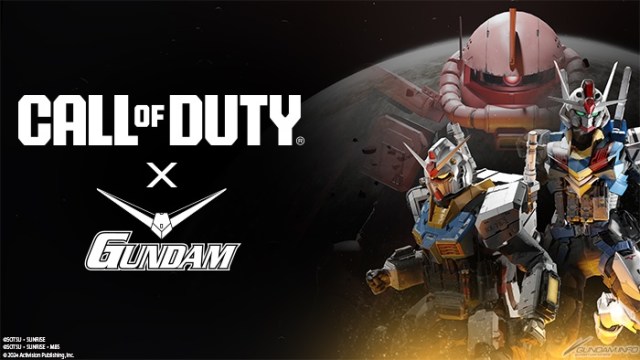
Human-sized Gundams fighting on the streets of Tokyo aren’t as strange as some of the signage behind them.
On Monday, word came that Gundam would be coming to video game publisher Activision’s Call of Duty series, with the iconic anime mecha slated to show up in both Call of Duty: Modern Warfare 3 and Call of Duty: Warzone Mobile.
You might be wondering how giant robots are going to be implemented into Call of Duty’s boots-on-the-ground-centric gameplay, but rather than appearing as towering mobile suits, the RX-78-2 Gundam, fashionable crimson Zaku II Char Custom, and XVX-016 Gundam Aerial will be incorporated as skins, essentially cosmetic overlays for the games’ currently existing infantryman character frames.
Visually, the results are kind of a mixed bag. On the one hand, the level of detail is very nice, with Call of Duty’s artists faithfully replicating all sorts of little design elements from the mecha’s anime appearances.
At the same time, since they’re skins, the Gundam and Zaku bodies still have to move like Call of Duty’s human soldiers, and also retain the same hitboxes so as not to give those using the mecha cosmetics a competitive advantage or disadvantage versus other players. That means they have to have more-or-less human sizes and proportions, and in some of the promotional images the effect is less “Gundam is in Call of Duty!” and more “Call of Duty has Gundam cosplayers in it now,” especially when there are other human combatants on-screen.
But again, that’s sort of unavoidable, given Call of Duty’s focus on player-versus-player gameplay and subsequent need to maintain competitive balance. What is avoidable, though, is something else that’s silly-looking in the game, and which can be seen in this preview shot.
The action seems to be taking place in “Tokyo,” a new map that’s set to be added to Call of Duty: Modern Warfare 3 on May 29 as part of the game’s Season Four update. And sure, even with a quick glance, it does its job of visually conveying “This fight is taking place in a Japanese city,” but there are a couple of things that, once you notice them, stand out as very un-Tokyo-like.
It’s not the garish anime-girl signage that bears a bit of resemblance to the titular heroine of ‘90s anime Excel Saga, though, nor is it what looks like a manga-style oni with blue hair at the top left of the image. Sure, those might be a little on the nose in terms of shouting “This is JAPAN!”, but playing into overseas perceptions of what Japan looks like has become its own branch of design in Japan, especially in areas that are seeing large numbers of foreign tourists during the current inbound travel boom.
No, the strange part is the sign between those two anime-style illustrations, the one that says お品書き.
お品書き is a proper Japanese word, so one might assume it makes sense to see it on a sign in Tokyo. The problem, though, is that お品書き, which is read as oshinagaki, is just the Japanese word for “menu.” It doesn’t mean “special menu,” “extensive menu,” or anything like that. It just means “menu,” nothing less, and nothing more, and so the sign, if you can read Japanese, looks just as ridiculous as a restaurant in the U.S. or any other English-speaking country putting up a giant, illuminated sign that just says “MENU.”
But wait, maybe the sign below お品書き, with the white text on the blue-and-purple background that says 時間営業, is a list of food items that this restaurant serves? Nope. 時間営業 isn’t a list of foods. What’s more, 時間営業 doesn’t mean anything at all. 時間, by itself, means “time,” and 営業 means “business operations,” but combined, they’re gibberish. Odds are someone on the Call of Duty team got mixed up while trying to write 営業時間, which actually does mean something: “business hours,” as in the hours a restaurant is open.
Of course, even if they had gotten it right and written the sign as 営業時間, the sign still wouldn’t have made any sense conceptually, since it’d be like writing “hours of operation” on the side of your business without writing what those hours are.
Update: Following the writing of this article it was pointed out by a reader that there may be a “24” meant to precede 時間営業 but not visible in the above image. In a different preview image of the Tokyo map visible on the Call of Duty official website, the sign does say 24時間営業, with the top of the numerals largely cropped suggesting it’s a scrolling video sign. Due to 時間 meaning both “time” and “hours,” 24時間営業 is a perfectly sensible phrase that means “open 24 hours,” so Activision is linguistically on the ball here, even if the layout, with 24 on its own horizontal line and 営業 and 時間 grouped together on the line below, looks a little unnatural.
Nonsensical Japanese signage is something that comes up with a puzzling level of frequency when overseas creative teams are setting a scene in Japan (something similar happened with the hotel seen in the beginning of the live-action Ghost in the Shell movie).
Sure, it should go without saying that Call of Duty’s primary mission is to entertain, and so looking cool is going to be far more of a priority for the developers than linguistic authenticity. At the same time, it’s not like it’s hard to find reference photos of actual city streets in Tokyo, nor is it hard, in this day and age, to find someone who’s knowledgeable enough about the Japanese language to spot oddities like these that stick out like a sore thumb, and could easily recommend alternatives that look more natural. That goes double for Activision, considering what a huge franchise Call of Duty is, and triple since they’re actively courting anime fans and gamers in Japan with their Gundam collaboration.
▼ If Activision is big enough to license Gundam, it seems like they’re big enough to have someone who’s Japanese-proficient check their work.
All that said, there are still a few days until the Tokyo map is released, so hopefully someone at Activision is scurrying to swap in some more sensible text this very minute.
Source: Bandai Namco
Top image: Bandai Namco
Insert images: Bandai Namco, Call of Duty
● Want to hear about SoraNews24’s latest articles as soon as they’re published? Follow us on Facebook and Twitter!
Follow Casey on Twitter, where he could veer off into discussions of Japanese linguistics and/or ’90s anime at any moment.

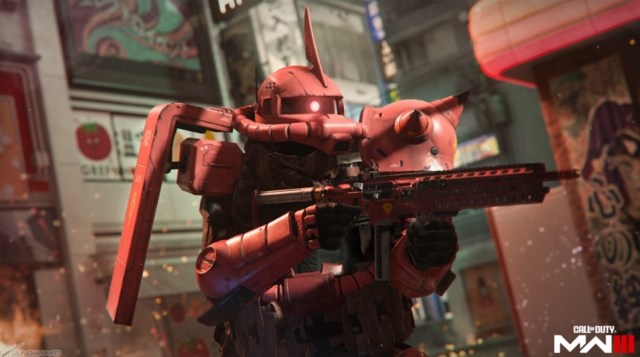
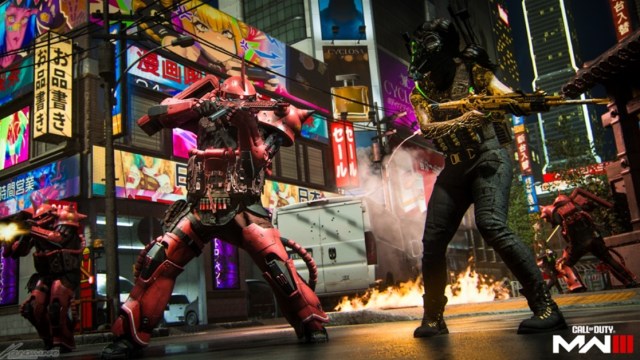
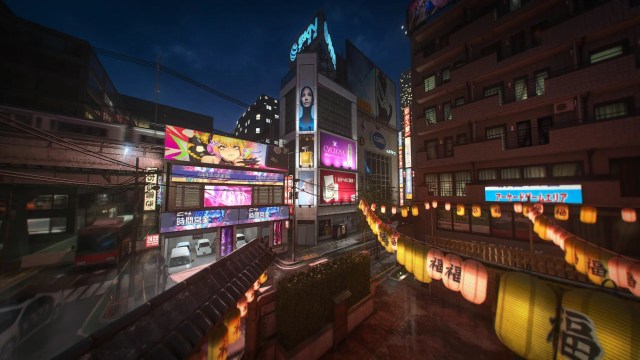
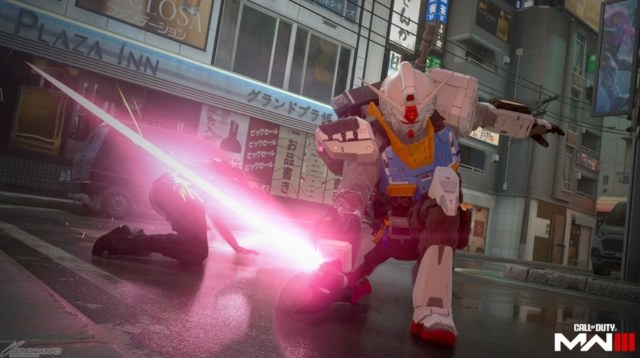
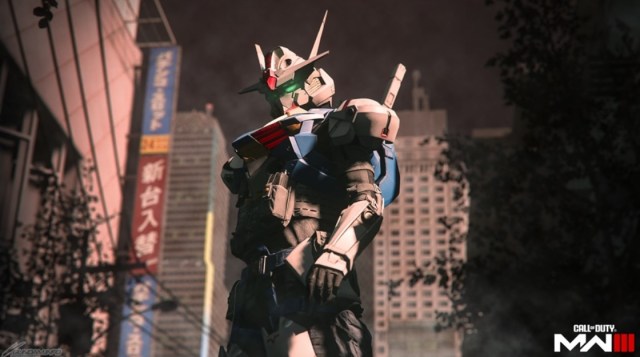
 Brand-new Gundam Cafe, biggest branch yet, to open in Osaka this month
Brand-new Gundam Cafe, biggest branch yet, to open in Osaka this month End of the line for Gundam Cafe as entire chain announces permanent closure
End of the line for Gundam Cafe as entire chain announces permanent closure Best field trip ever? Japanese schoolkids get to control the full-scale moving Gundam’s hand
Best field trip ever? Japanese schoolkids get to control the full-scale moving Gundam’s hand Gundam face masks will help you stay safe when you have to be mobile during the pandemic【Photos】
Gundam face masks will help you stay safe when you have to be mobile during the pandemic【Photos】 Japanese man complains about foreign languages on Tokyo train, Twitter drowns him in kindness
Japanese man complains about foreign languages on Tokyo train, Twitter drowns him in kindness Sorakaze: New Hakone sightseeing cruise boat on Lake Ashi is as stunning as the Mt Fuji views
Sorakaze: New Hakone sightseeing cruise boat on Lake Ashi is as stunning as the Mt Fuji views You can be on this beautiful Japanese island in less than two hours from downtown Tokyo
You can be on this beautiful Japanese island in less than two hours from downtown Tokyo Nintendo unveils new Super Mario travel item merch line just in time for midsummer trips【Photos】
Nintendo unveils new Super Mario travel item merch line just in time for midsummer trips【Photos】 Japan’s new canned chu-hai with fresh lemon slice: disappointing gimmick or drink revelation?
Japan’s new canned chu-hai with fresh lemon slice: disappointing gimmick or drink revelation? 5 reasons why foreign tourists should skip Tsukiji and go to a different place in Tokyo instead
5 reasons why foreign tourists should skip Tsukiji and go to a different place in Tokyo instead Pizza Hut made a Cardcaptor Sakura Pizza, and its ingredients are as crazy as its looks
Pizza Hut made a Cardcaptor Sakura Pizza, and its ingredients are as crazy as its looks Four words that mean something very different in east Japan and Kyoto
Four words that mean something very different in east Japan and Kyoto This balding middle-aged fairy is one of Japan’s most unique mascot characters
This balding middle-aged fairy is one of Japan’s most unique mascot characters No-bus Kyoto sightseeing! SoraNews24’s ultimate on-foot guide for Japan’s former capital【Part 1】
No-bus Kyoto sightseeing! SoraNews24’s ultimate on-foot guide for Japan’s former capital【Part 1】 Japanese convenience store allows use of initials on name tags to prevent harassment by customers
Japanese convenience store allows use of initials on name tags to prevent harassment by customers Studio Ghibli releases new Totoro collection to keep us hydrated all summer long
Studio Ghibli releases new Totoro collection to keep us hydrated all summer long One Piece celebrates 25th anniversary with awesome new Uniqlo T-shirt line tracing series’ history
One Piece celebrates 25th anniversary with awesome new Uniqlo T-shirt line tracing series’ history The Ghibli Park real-world Totoro house’s kitchen and bath actually get used by staff【Pics】
The Ghibli Park real-world Totoro house’s kitchen and bath actually get used by staff【Pics】 Daiso to change Japanese closing-time music because foreign tourists aren’t taking the hint
Daiso to change Japanese closing-time music because foreign tourists aren’t taking the hint The method to save a seat in Japan shows how awesomely safe the country is【Video】
The method to save a seat in Japan shows how awesomely safe the country is【Video】 Starbucks Japan has a miniature collection, but you’ll need patience to get it
Starbucks Japan has a miniature collection, but you’ll need patience to get it Himakajima: The Japanese island with one traffic light that only turns green once a year
Himakajima: The Japanese island with one traffic light that only turns green once a year Tourist ban now in effect in Kyoto’s Gion geisha district…but are visitors obeying the rules?
Tourist ban now in effect in Kyoto’s Gion geisha district…but are visitors obeying the rules? Starbucks releases an official green tea chai latte with special Japanese ingredients
Starbucks releases an official green tea chai latte with special Japanese ingredients Tourists damage Mt Fuji Lawson blackout screen that was meant to stop bad-mannered visitors
Tourists damage Mt Fuji Lawson blackout screen that was meant to stop bad-mannered visitors Practical Zelda Tears of the Kingdom merch is here to be Hyrule-helpful in your daily life【Pics】
Practical Zelda Tears of the Kingdom merch is here to be Hyrule-helpful in your daily life【Pics】 Studio Ghibli Uniqlo shirts and bags on sale now, but not in Japan【Photos】
Studio Ghibli Uniqlo shirts and bags on sale now, but not in Japan【Photos】 Japanese department store rooftop is a secret oasis where you can escape the crowds in Tokyo
Japanese department store rooftop is a secret oasis where you can escape the crowds in Tokyo New Hello Kitty and friends summer kimono are perfect for Sanrio-loving parents, kids, and sisters
New Hello Kitty and friends summer kimono are perfect for Sanrio-loving parents, kids, and sisters McDonald’s new Happy Meals offer up cute and practical Sanrio lifestyle goods
McDonald’s new Happy Meals offer up cute and practical Sanrio lifestyle goods Sales of Japan’s most convenient train ticket/shopping payment cards suspended indefinitely
Sales of Japan’s most convenient train ticket/shopping payment cards suspended indefinitely Sold-out Studio Ghibli desktop humidifiers are back so Totoro can help you through the dry season
Sold-out Studio Ghibli desktop humidifiers are back so Totoro can help you through the dry season Japanese government to make first change to romanization spelling rules since the 1950s
Japanese government to make first change to romanization spelling rules since the 1950s Foreigner’s request for help in Tokyo makes us sad for the state of society
Foreigner’s request for help in Tokyo makes us sad for the state of society Ghibli founders Toshio Suzuki and Hayao Miyazaki contribute to Japanese whisky Totoro label design
Ghibli founders Toshio Suzuki and Hayao Miyazaki contribute to Japanese whisky Totoro label design Tokyo’s most famous Starbucks is closed
Tokyo’s most famous Starbucks is closed Doraemon found buried at sea as scene from 1993 anime becomes real life【Photos】
Doraemon found buried at sea as scene from 1993 anime becomes real life【Photos】 One Piece characters’ nationalities revealed, but fans have mixed opinions
One Piece characters’ nationalities revealed, but fans have mixed opinions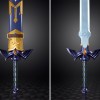 Life-size vibrating Legend of Zelda Master Sword for sale from Nintendo【Photos】
Life-size vibrating Legend of Zelda Master Sword for sale from Nintendo【Photos】 Newest Gundam anime robot model kit is made with green tea leaves, smells like green tea
Newest Gundam anime robot model kit is made with green tea leaves, smells like green tea Great Gundam news! Japan’s life-size moving giant robot statue won’t close down this year after all
Great Gundam news! Japan’s life-size moving giant robot statue won’t close down this year after all Drink your tea in style with the new Zaku mobile suit-shaped heavy iron teapot
Drink your tea in style with the new Zaku mobile suit-shaped heavy iron teapot Gundam metaverse’s Gunpla scan/share system plans to connect fans from all countries and angles
Gundam metaverse’s Gunpla scan/share system plans to connect fans from all countries and angles Japan’s moving life-size Gundam statue adds new Witch from Mercury sequence to its move set
Japan’s moving life-size Gundam statue adds new Witch from Mercury sequence to its move set Grand opening date announced for Japan’s new moving life-size Gundam anime robot
Grand opening date announced for Japan’s new moving life-size Gundam anime robot Gundam can now be part of your signature in Japan with Mobile Suit Gundam personal seals【Photos】
Gundam can now be part of your signature in Japan with Mobile Suit Gundam personal seals【Photos】 GPS-lacking Gundam gets lost on the streets of Taiwan, asks locals for directions
GPS-lacking Gundam gets lost on the streets of Taiwan, asks locals for directions Real-world Gundam rations now on sale in Japan【Photos】
Real-world Gundam rations now on sale in Japan【Photos】 This lucky bag of anime models is also a decades-long history lesson for our mecha newbie
This lucky bag of anime models is also a decades-long history lesson for our mecha newbie Some important Christmas shopping advice for parents of otaku and fujoshi kids
Some important Christmas shopping advice for parents of otaku and fujoshi kids Get in the Gundam robot! Event lets fans sit in giant Zeta Gundam replica cockpit
Get in the Gundam robot! Event lets fans sit in giant Zeta Gundam replica cockpit Turn over a new gold leaf with these stylish Gundam dishes from the Gundam Cafe
Turn over a new gold leaf with these stylish Gundam dishes from the Gundam Cafe
Leave a Reply